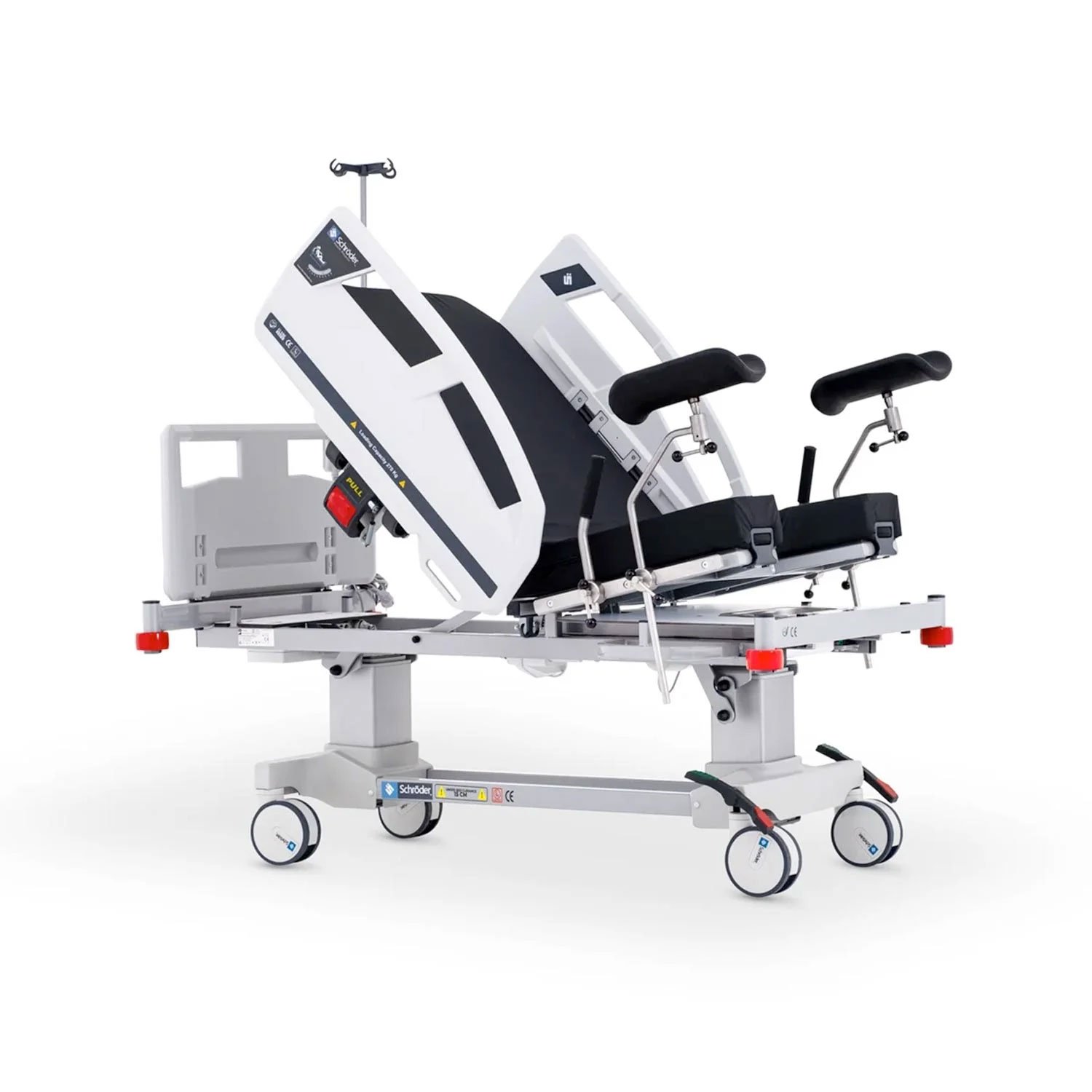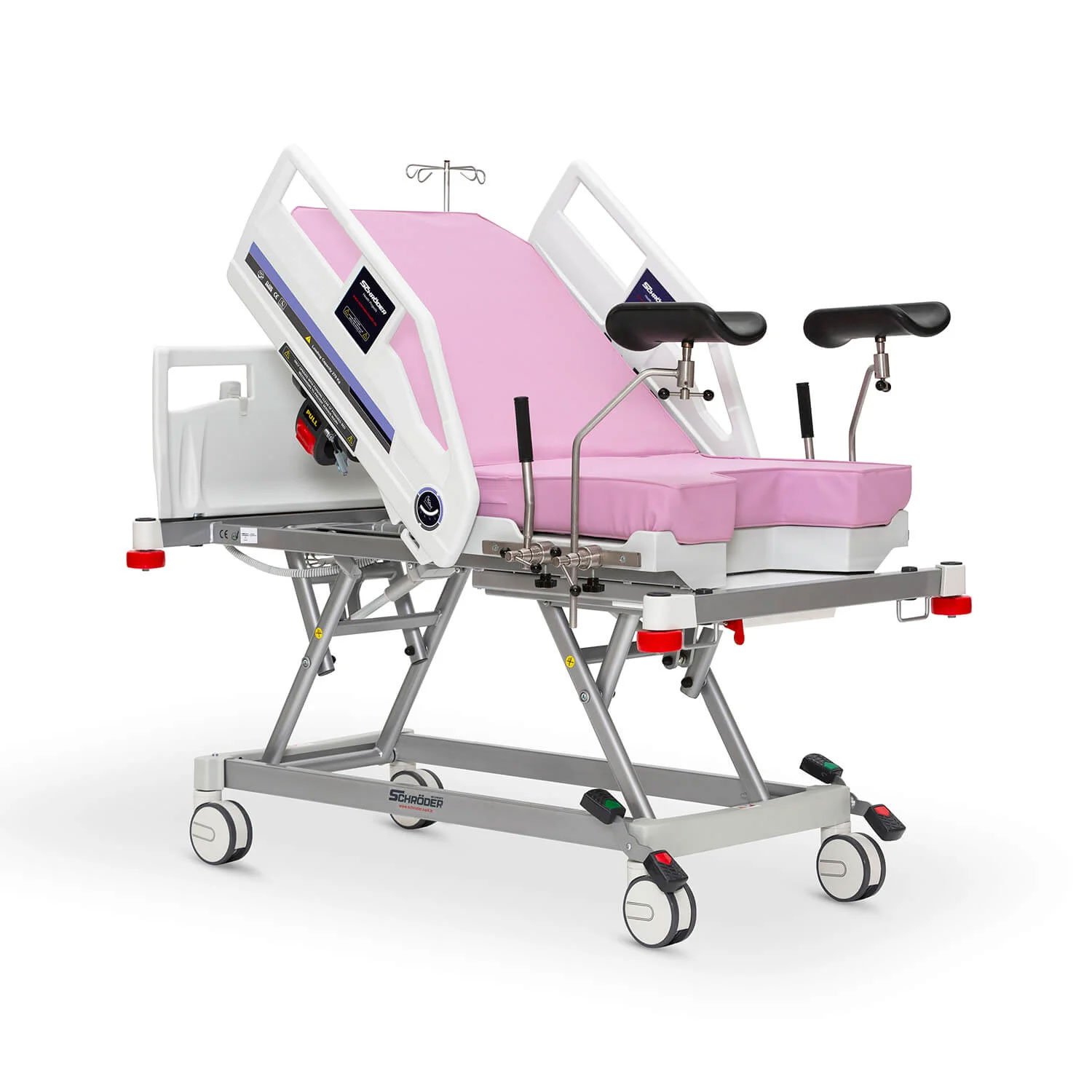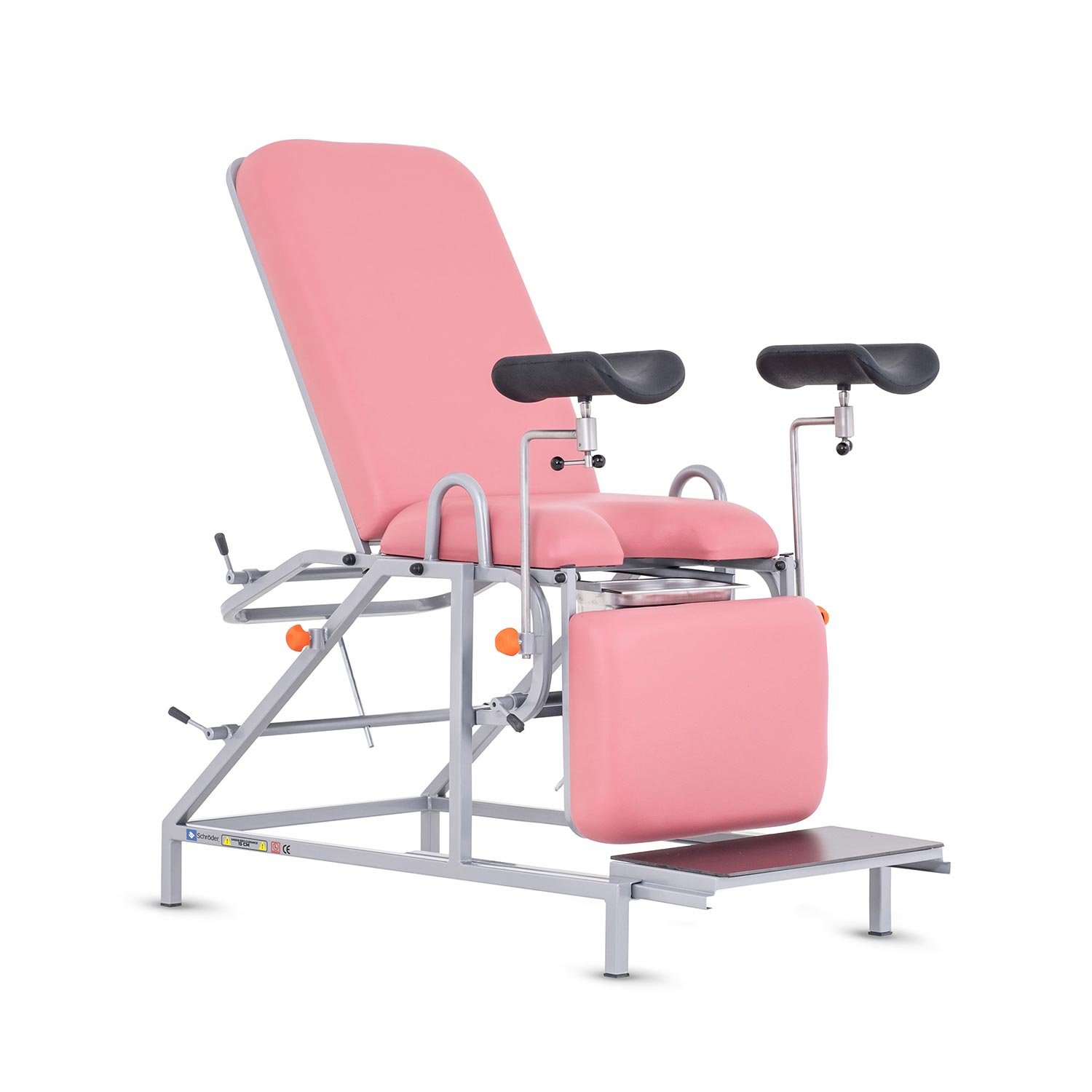Explore Our Obstetric & Gynaecology Beds Models
BLIZZ Series
BLIZZ 1200
Electrical Obstetric / Delivery Bed / Gynecology Table
BLIZZ 1100
Electrical Obstetric / Delivery Bed / Gynecology Table
BLIZZ 1100H
Hydraulic Obstetric / Delivery Bed / Gynecology Table
DT Series
A gynaecology bed is a specialized medical bed designed for gynaecological examinations, minor procedures, and treatments related to women’s reproductive health. Gynaecology beds typically include adjustable backrests, height control, and leg supports to provide comfort for patients while allowing healthcare professionals easy access during examinations.
A gynaecology table is designed for examinations, diagnostic procedures, and minor gynaecological surgeries such as colposcopies, IUD insertions, and pelvic exams. These tables are equipped with adjustable backrests, leg supports, and height controls to facilitate proper patient positioning.
A delivery bed or delivery table is a specially designed medical bed used in maternity wards to support mothers during childbirth. These beds are adjustable, allowing healthcare professionals to position the patient comfortably for each stage of labor and delivery. Modern options, such as the obstetric gynaecology beds, gynaecology bed, and gynecology table, often feature ergonomic designs, easy height adjustments, and hygiene-friendly materials. Hospitals and clinics may also use a modern gynecology chair or gyn examination table for prenatal check-ups and minor gynecological procedures. The birth bed is engineered for both patient comfort and medical efficiency, ensuring quick adjustments during emergencies. Whether in a specialized obstetric clinic or a general hospital, the right gynecology bed enhances patient care, supports safe delivery, and provides healthcare staff with better access for necessary procedures.
Key Features of an Obstetric Bed
A delivery bed or obstetric bed is designed to provide comfort for the mother and efficiency for medical staff during childbirth. These beds often have adjustable backrests, leg supports, and height settings to facilitate different birthing positions. Advanced obstetric gynaecology beds may feature removable sections, allowing quick transformation from a resting bed to a delivery table. Many models include wheels with locking systems for mobility and stability. Upholstery is typically made from antibacterial, easy-to-clean materials to ensure hygiene. Whether manual or electric, the goal of a gynaecology bed is to provide a safe, adaptable, and supportive environment throughout labor and delivery.
Safety Features in Obstetric, Gynaecology, and Delivery Beds
Safety is a top priority in gynae bed and obstetric gynaecology beds design. Common safety features include side rails to prevent falls, locking caster wheels for stability, and secure leg support mechanisms. Modern gynecology beds may have emergency adjustment levers for rapid repositioning during complications. Anti-bacterial surfaces and seamless upholstery help reduce infection risks. Additionally, delivery beds often feature weight-bearing frames to handle sudden shifts during labor. These safety elements not only protect the patient but also enhance the efficiency and confidence of the healthcare team during critical moments.
Electric vs Manual Obstetric Beds
Electric obstetric beds offer motorized adjustments for height, backrest, and leg sections, allowing precise positioning with minimal effort. They are ideal for high-volume maternity wards where speed and flexibility matter. On the other hand, manual obstetric gynaecology beds rely on mechanical levers and cranks for adjustments. While they are more affordable and do not require electricity, they may take longer to operate. Electric models often come with programmable settings, whereas manual ones are valued for their durability and low maintenance. Choosing between them depends on budget, facility requirements, and the desired level of convenience in delivery bed operation.
Electric vs Manual Gynaecology and Delivery Beds
Electric gynaecology beds and delivery tables provide smooth, effortless adjustments for patient comfort and better accessibility during examinations or childbirth. They often include advanced features like preset positions, foot-operated controls, and integrated lighting. Manual gyn examination tables and birth beds require physical adjustments but are generally more cost-effective and can be used in areas with unreliable electricity. Electric models improve workflow efficiency, while manual types excel in simplicity and long-term durability. Healthcare facilities often choose based on patient volume, available budget, and the complexity of procedures performed on the gynecology table.
Proper maintenance of a gynaecology bed or obstetric gynaecology bed ensures long-term performance and hygiene. Daily cleaning should include wiping all surfaces with approved disinfectants to prevent bacteria buildup. Upholstery must be inspected for cracks where contaminants can accumulate. Mechanical parts, such as levers or electric motors, should be regularly lubricated and tested for smooth operation. For delivery beds and birth beds, special attention should be given to joints and movable sections, as these areas are prone to wear. Hospitals should implement a maintenance schedule that includes periodic deep cleaning and professional servicing to ensure safety, reliability, and patient comfort.
The key difference between a delivery bed and a delivery table is their functionality and intended use:
- Delivery Beds are designed for all stages of childbirth, from labor to postpartum recovery. They are often adjustable and can be converted for longer-term patient care after delivery.
- Delivery Tables are compact and specifically designed for the actual birthing process or minor procedures. They are commonly used in maternity clinics, labor wards, and emergency deliveries where space efficiency is essential.
Yes, many obstetric beds are versatile and can be used for various gynaecological procedures, including examinations, minor surgeries, and postpartum care. Their adjustable features and ergonomic design make them suitable for a range of women’s health services.
Most gynaecology beds, delivery beds, and tables come with safety features to ensure patient security and procedural efficiency, such as:
- Lockable wheels for stability.
- Ergonomic side rails to prevent falls.
- Adjustable stirrups and leg rests for comfortable positioning.
- Hygienic, easy-to-clean materials to prevent infections.
The choice between electric and manual beds depends on budget, facility needs, and operational efficiency:
- Electric beds offer motorized height and position adjustments, reducing strain on caregivers and allowing precise control during delivery or examinations.
- Manual beds require hand-operated adjustments, making them cost-effective and suitable for facilities with limited access to electrical equipment.
When selecting a gynaecology or delivery bed, consider:
- Type of procedures (examinations, childbirth, or minor surgeries).
- Adjustability and positioning options for patient comfort.
- Manual vs. electric controls based on facility needs.
- Hygiene and durability to ensure long-term use in clinical environments.
Facilities offering comprehensive obstetric and gynaecological care often opt for multi-functional models like the BLIZZ 1100, which supports labor, delivery, and postpartum care in one system.
When selecting a bed, consider the following factors:
- Functionality: Ensure it meets the specific needs of your procedures.
- Adjustability: Look for features that enhance patient comfort and provider access.
- Safety: Check for essential safety features like side rails and braking systems.
- Durability: Opt for models made with high-quality materials for longevity.
Consulting with manufacturers like Schröder Health Projects can provide insights into models that best suit your facility’s requirements.
Schröder Health stands out for its innovative solutions designed to maximize patient comfort and healthcare professionals’ efficiency. The product range extends from hospital bed models to advanced obstetric gynaecology beds, delivery tables, and modern gynecology chairs. Every product is built with high-quality standards, durable materials, and ergonomic design principles. In addition, easy-to-clean surfaces and integrated safety features ensure both patient safety and hygiene are prioritized. Choosing Schröder Health means investing in professional solutions that combine long-lasting performance, modern technology, and enhanced patient satisfaction.








